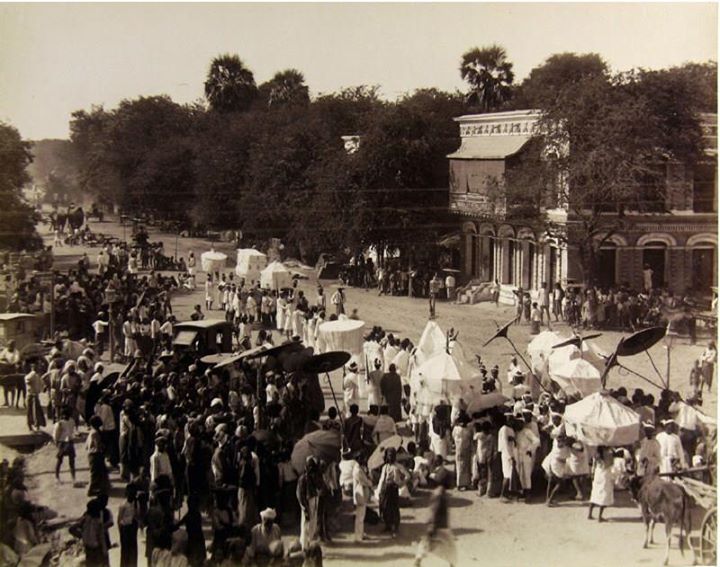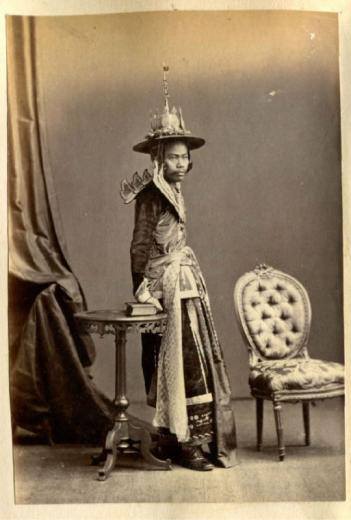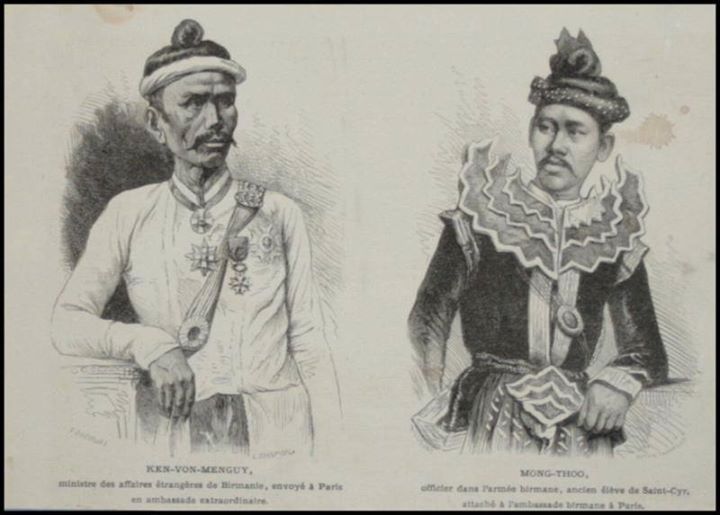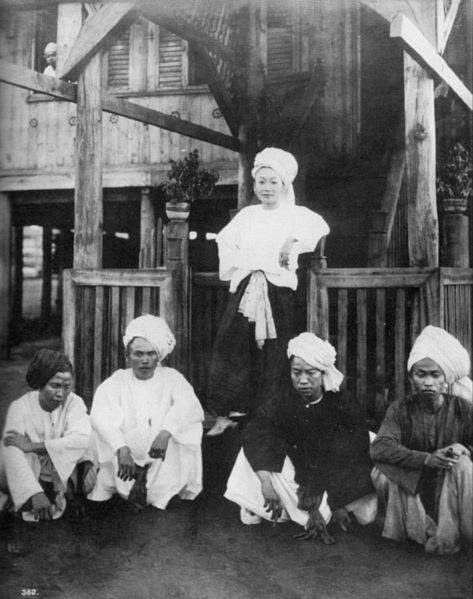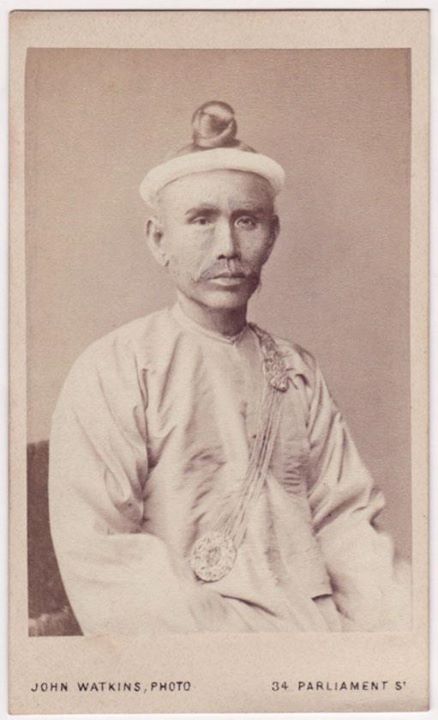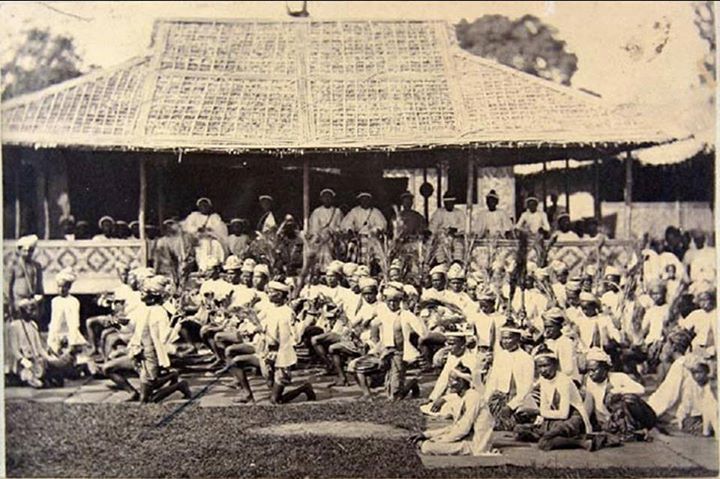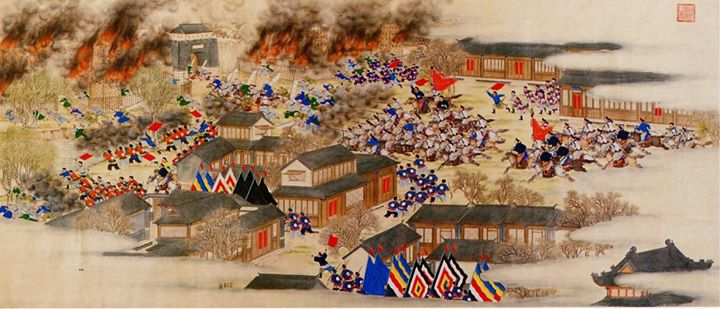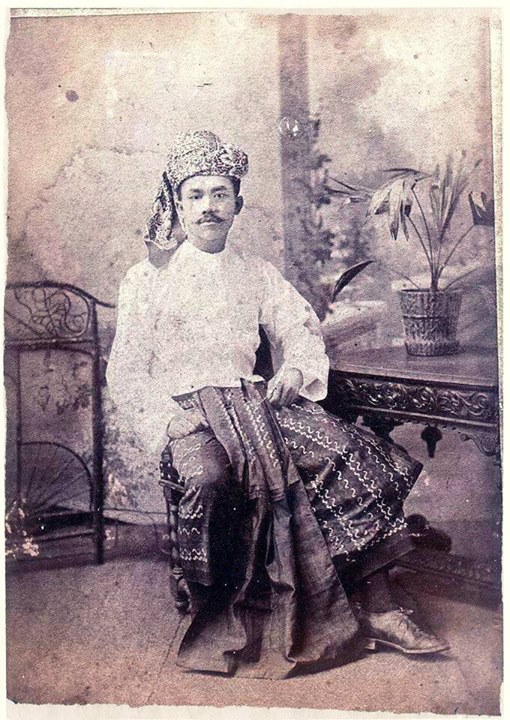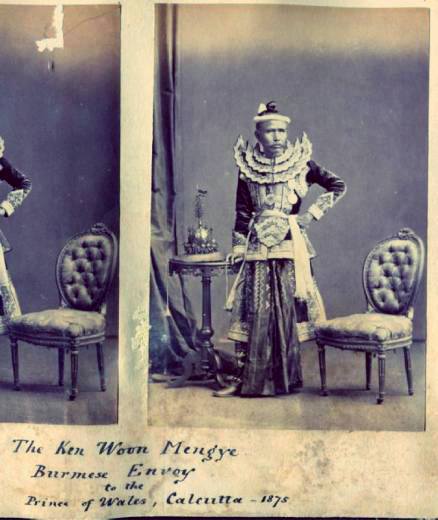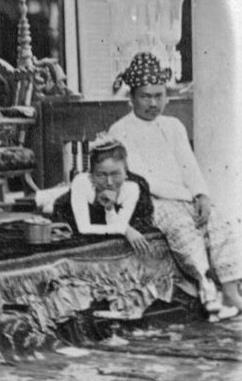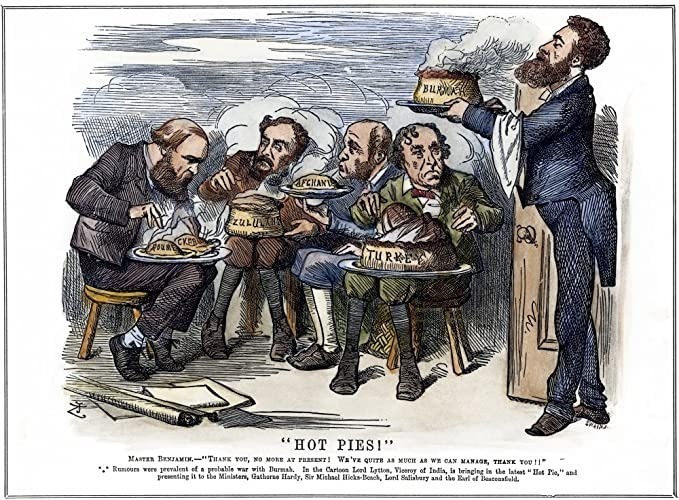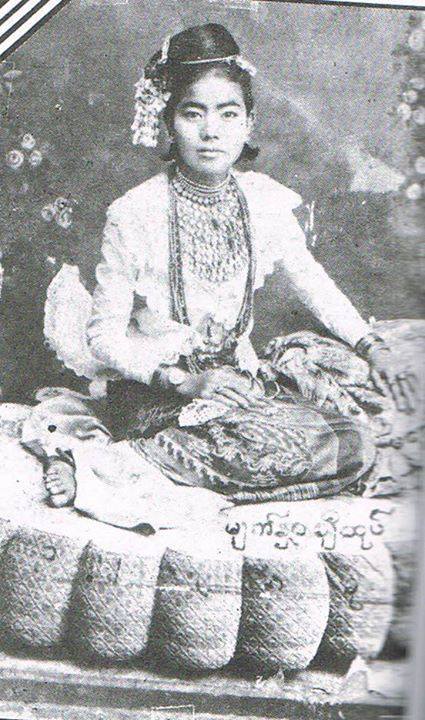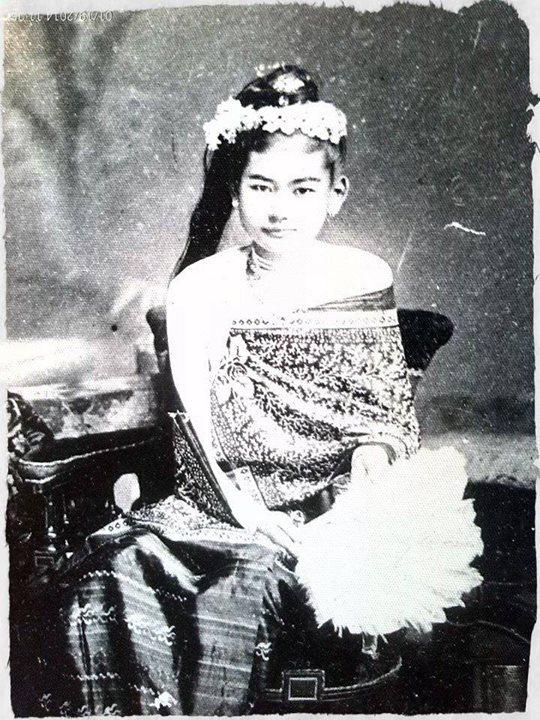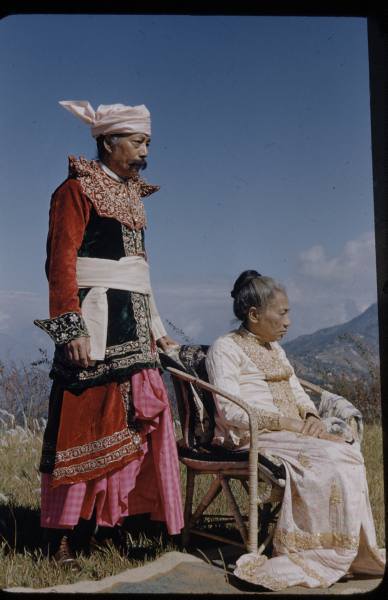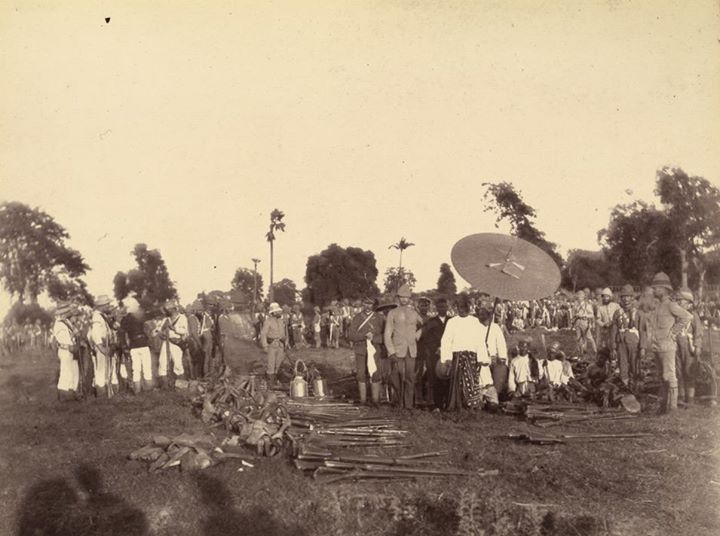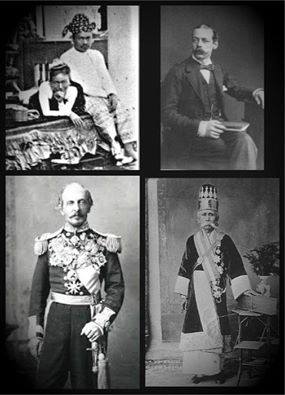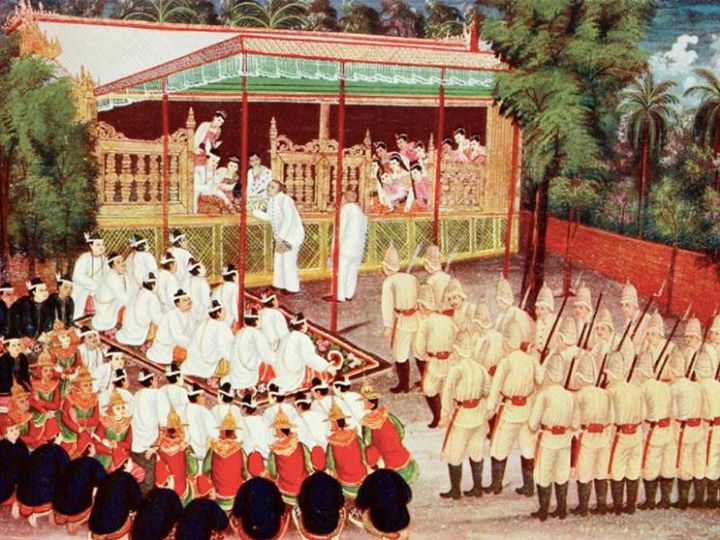Late Konbaung Myanmar and the English Wars (1824-1885AD)
Myanmar's last dynasty was also its most expansive, reaching into today's Northeast India as well as across what is now Laos and Thailand. Over the late 18th and 19th centuries, its royal court created much of the art and architecture that are considered "traditional" today. In the east, the saopha chieftains of Shan State ruled an array of principalities with growing ties to the Irrawaddy valley as well as to China's Yunnan province.
Over the middle decades of the 19th century, however, a series of disastrous wars against the British India Empire led to the kingdom's collapse. A desperate attempt to reform and modernise in the face of imperial aggression failed and the country was eventually colonized by the British.
This section draws together last traditions from the Konbaung period as well as stories and individuals from its little-remembered reformist era and Burma's transition to colonial rule.
Funeral of the Mainglon Princess - C Road, Mandalay c. 1890s
The Mainglong Princess Thu Thiri Kaytha Waddy was born 1867 and was a daughter of King Mindon and the Thayasin Queen (Thayasin Myoza Mibuya). In 1894 she married her half-brother the Kawlin Prince and had two children before she died in 1898, aged 31. With the immediate Burmese royal family in exile in India, the remnants of the extended family lived out their days in Burma under the watchful eye of the British authorities - family events, such as the...
Read MoreThangyet Wun U Myu
This is a rare portrait of the Thangyet Wun U Myu (later styled Mingyi Minhla Maha Sithu Kyaw), a scion of an old family of Ava nobility and was one of the first Burmese to be educated in Paris. He obtained a degree in engineering at the École Centrale des Arts et Manufactures in 1868 and later returned for further study in France in the 1870s. U Myu cheld different posts in Mandalay, leading King Mindon's efforts to build the...
Read MoreThe very first Burmese mission to France
The very first Burmese mission to France was the 1871 mission led by the Kinwun Mingyi - it was meant as a signal to the British that Burma could court other powers in Europe. During that mission, the Kinwun Mingyi and his team toured the Louvre, where they saw the Egyptian mummies, paid their respects at Napoleon's Tomb, and visited the National Library. At the National Library, they were shown an old map, purported to have been drawn by Marco...
Read MorePrincess Sao Nang Tip Htila of Keng Tung
Born in 1871, Princess Sao Nang Tip Htila of Keng Tung, is the sister of the 52nd and 53rd Saophas of Kengtung and the wife of the Saopha of Kenghkam. A powerful figure in her own right, she was renowned for her cunning and charisma and admired by her countrymen and British alike. She was also a shrewd businesswoman (and early importer of motor cars) and attended the 1903 Delhi Durbar marking the coronation of Edward VII as King-Emperor of...
Read MoreFirst Burmese embassy to Europe
On a hot and sticky March morning, the SS Tenasserim, flying the peacock flag of the Burmese kingdom as well as the Union Jack, steamed down the Rangoon River and into the salty waters of the Indian Ocean. It was a new state-of-the-art ship, built in Glasgow for the Henderson passenger line, and came with no less than twenty well-appointed first-class cabins. On board was a delegation from the Court of Ava, led by the scholarly Kinwun Mingyi, a minister...
Read MoreKing Mindon’s donation of “hti” for the Shwedagon
In 1871 the British were in occupation of all of Lower Burma including Rangoon. The Chief Commissioner at the time, Sir Ashley Eden, agreed that King Mindon could donate the new hti, or crown for the Shwedagon Pagoda but insisted that it could only be done via British authorities; the hti would be received by the British and handed over by them to the Shwedagon trustees. The British believed that a direct donation would symbolize King Mindon's continuing sovereignty over all...
Read MorePanthay Rebellion of 1872
On 26 December 1872, the 16-year long "Panthay Rebellion" was crushed with the recapture of Dali and the execution of the Panthay leader, Du Wenxiu. When he was captured, Du Wenxiu took an overdose of opium but he was decapitated nonetheless. His head was encased in honey and sent to the Emperor as a gift. Tens of thousands of Panthay were slaughtered. Hundreds of thousands in total likely died as a result of the rebellion. Thousands more found refuge in...
Read MoreThe man who would be king – Prince of Pyinmana
The Prince of Pyinmana who had been a candidate for the throne in 1878 and was considered by the Japanese as a possible new "king of Burma" in 1942. He was born in 1872 and was the son of then King Mindon and a half-brother of King Thibaw. Educated at St Marks School, Mandalay, and at Dehra Doon, he was last surviving child of King Mindon and lived until 1963, the year NASA launched its first television satellite and the...
Read MoreKinwun Mingyi’s visit to Calcutta in 1875
This very rare photograph of the Kinwun Mingyi was taken during his visit to Calcutta in 1875 at s a turning-point in Anglo-Burmese relations. The ostensible reason for the trip was to meet the Prince of Wales (the future King Edward VII) who was then on a tour of the Indian Empire. But the Kinwun's trip was also a last-ditch attempt to repair rapidly deteriorating relations with the British. By 1875, British interference in Burmese internal politics was growing by...
Read MoreThe vision of King Thibaw’s government
This is a rare early photograph of King Thibaw and Queen Supayalat. The government of King Thibaw came to power in November 1878. Contrary to popular views, it was a highly reformist government at first, led by men such as the Kinwun Mingyi and the Yaw Atwinwun, as well as several who had returned from studies in Europe. They were eager to modernize, reach out to the West, and preserve Burma's independence, but their ambitious plans for political and economic...
Read MoreBurma to conquer?
This cartoon from the UK's Punch magazine in 1879 (by John Tenniel) depicts the Viceroy Of India, Lord Lytton, presenting British cabinet ministers with a possible war to conquer Burma while they are already trying to cope with several other international crises. Many British imperialists were hoping the death of King Mindon would be an opportunity to annex the Burmese kingdom to the British Indian Empire. King Thibaw's new reformist government was widely (and unfairly) depicted as brutal and corrupt...
Read More"Sin Kho Ma Lay"
This photograph from Mandalay has been identified as the 1880s court dancer and favourite of Queen Supayalat, Ma Shwe Hmyin. She is perhaps better known by her sobriquet "Sin Kho Ma Lay" (or "the little maid carried away on an elephant") after having allegedly been transported on an elephant to the smitten Yanaung Prince (Maung Toke).
Read MoreMyothit Princess
The Myothit Princess Thu Thiri Haymar Waddy was the daughter of King Mindon and HM Tharazin Myoza Minbura. She was previously the Princess of Taingda. Later she became the Princess of Myothit. She is a half-sister of King Thibaw. She married another half-brother, the Prince of Kawlin. The photograph was taken c. 1880.
Read MoreMyoza of Kyaukmyaung’s visit to Simla
In April 1882, a Burmese embassy led by the Sorbonne-educated diplomat the Myoza of Kyaukmyaung arrived in Simla for talks with Lord Ripon, Viceroy of India. It was the last serious effort to avoid the war and the annexation of Burma that would soon follow. The Myoza of Kyaukmyaung (U Shwe O, seated second from right) was then an Atwinwun, and working desperately to protect his country's independence whilst also trying to balance his relations with the two most powerful...
Read MoreThe Second Princess, daughter of King Thibaw
The Second Princess, Ashin Hteik Su Myat Paya-lat, daughter of King Thibaw, was just two years old when she accompanied her parents from Mandalay into exile in 1885. In October 1916 she eloped and married U Khin Maung Lat, a former Mandalay courtier and together they lived the rest of their lives, apparently peacefully and happily, in Kalimpong in the Himalayan foothills near Darjeeling, where they managed a small diary farm. In this little-known photograph of the couple taken by...
Read MoreThe Burmese surrender at Ava
On 26 November 1885, the Kyaukmyaung Atwinwun and the Wetmasut Wundauk arrived at Ava to negotiate a surrender with the Burma Expeditionary Force of General Sir Harry Prendergast. The Ava fort commander, the Myoza of Myothit, refused to accept the authority of the two royal envoys and agreed to surrender on 27 November only after receiving a direct order from King Thibaw by telegraph. That afternoon, the Myothit Myoza sat on the riverbank weeping as he watched the British ships...
Read MoreThe Battle of Minhla
A black letter day in Myanmar history is 17 November 1885. On that day, British and Indian forces under Brigadier General GS White took the Italian-designed fort at Minhla after unexpectedly fierce resistance from the Burmese garrison. Over a hundred Burmese were killed. The British side were armed for the first time with machine guns (recoil-operated Maxim guns). This was the first and only real battle of the Third Anglo-Burmese War. By the end of the month the Burmese kingdom...
Read MoreThe ultimatum that led to war
On 22 October 1885 Lord Dufferin the Viceroy of India issued an ultimatum calling on the government of King Thibaw to place its foreign relations under the permanent control of the British Indian Empire. The formal aim of the ultimatum was a resolution of the dispute with the Bombay-Burmah Trading Company but the real intent was to permanently end Burmese sovereignty. The British were increasingly worried about prospect of closer Franco-Burmese relations and attracted to the idea of Burma as...
Read MoreAfter the Burmese Kingdom fell into British Hands
From 1883-85, the reformists around the king, led by the Kinwun Mingyi, the Yaw Atwinwun, and the Wetmasut Wundauk, were unable to implement the sweeping changes they felt necessary to save the kingdom. Conservatives, supported by factions within the army and the royal establishment, had pushed back and halted many of the constitutional and fiscal reforms originally set in motion. Fast mounting external and domestic challenges, compounded by worsening economic conditions, fighting in the Kachin Hills, two successive years of...
Read More